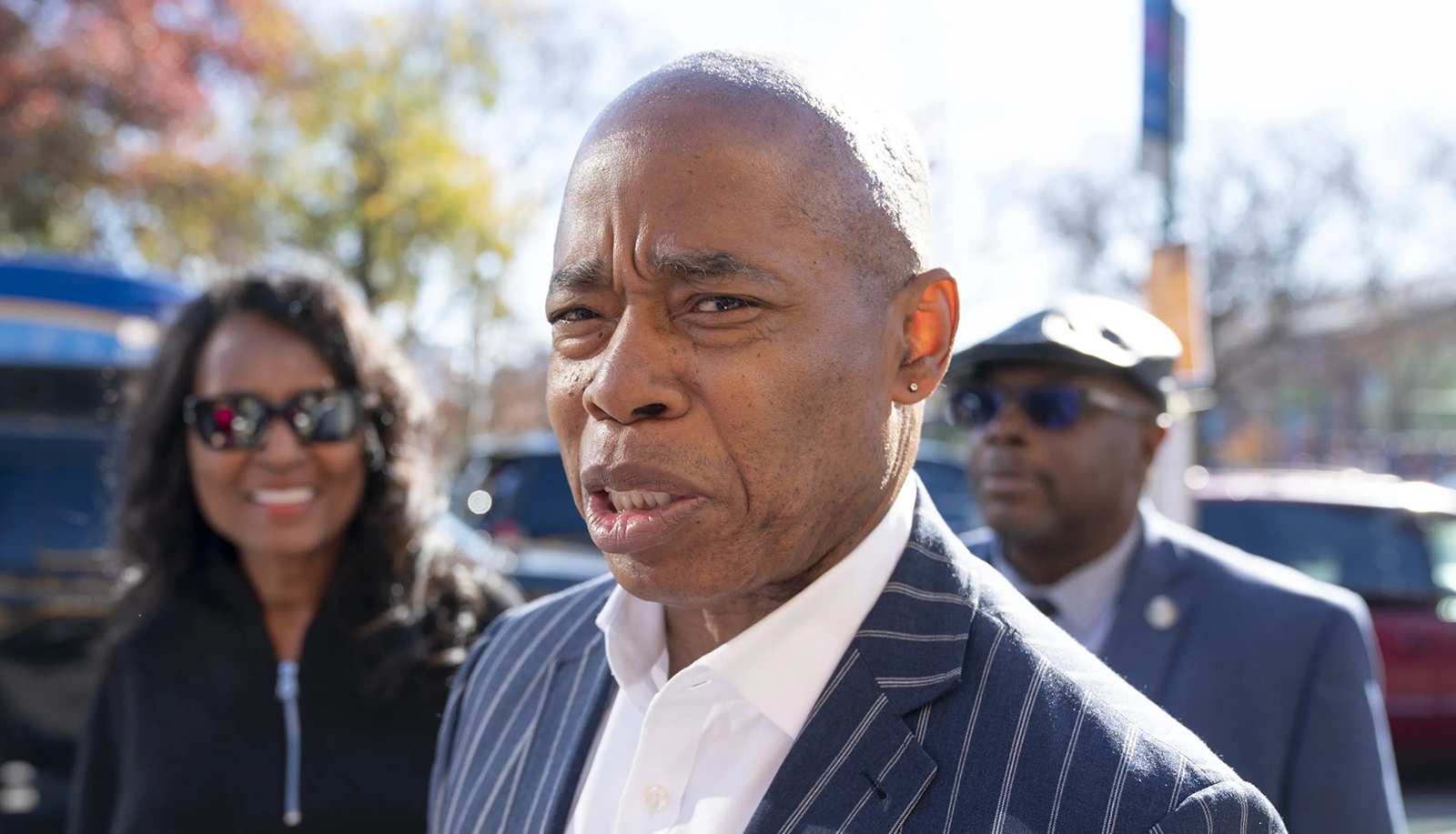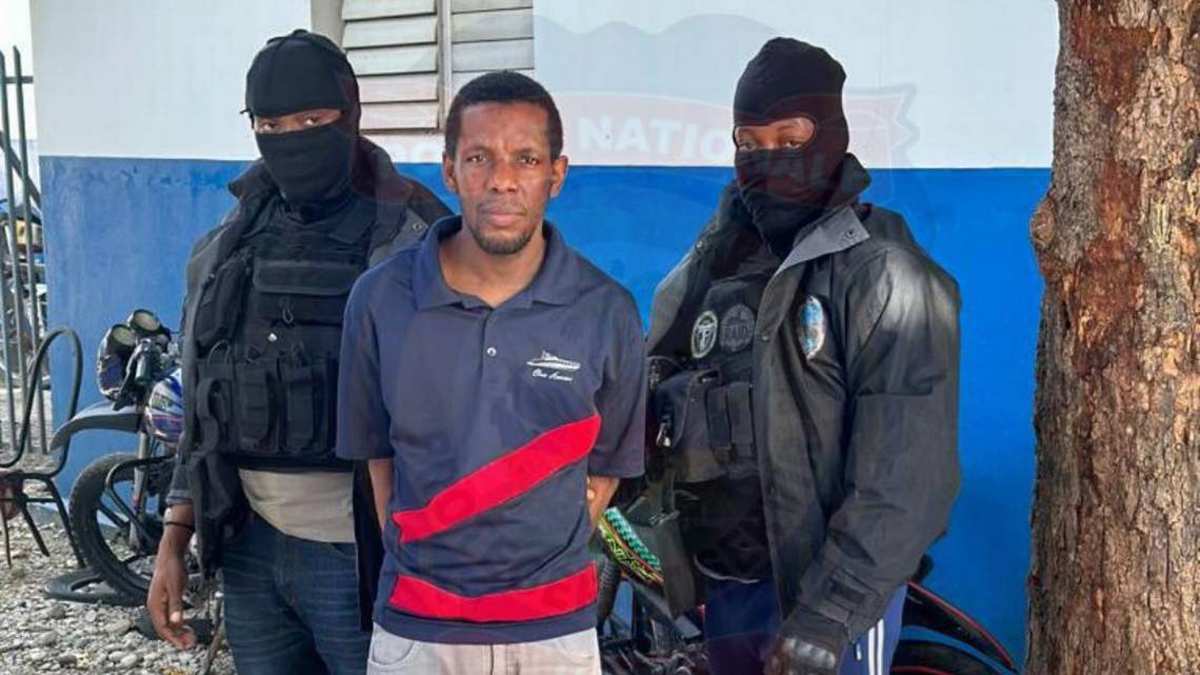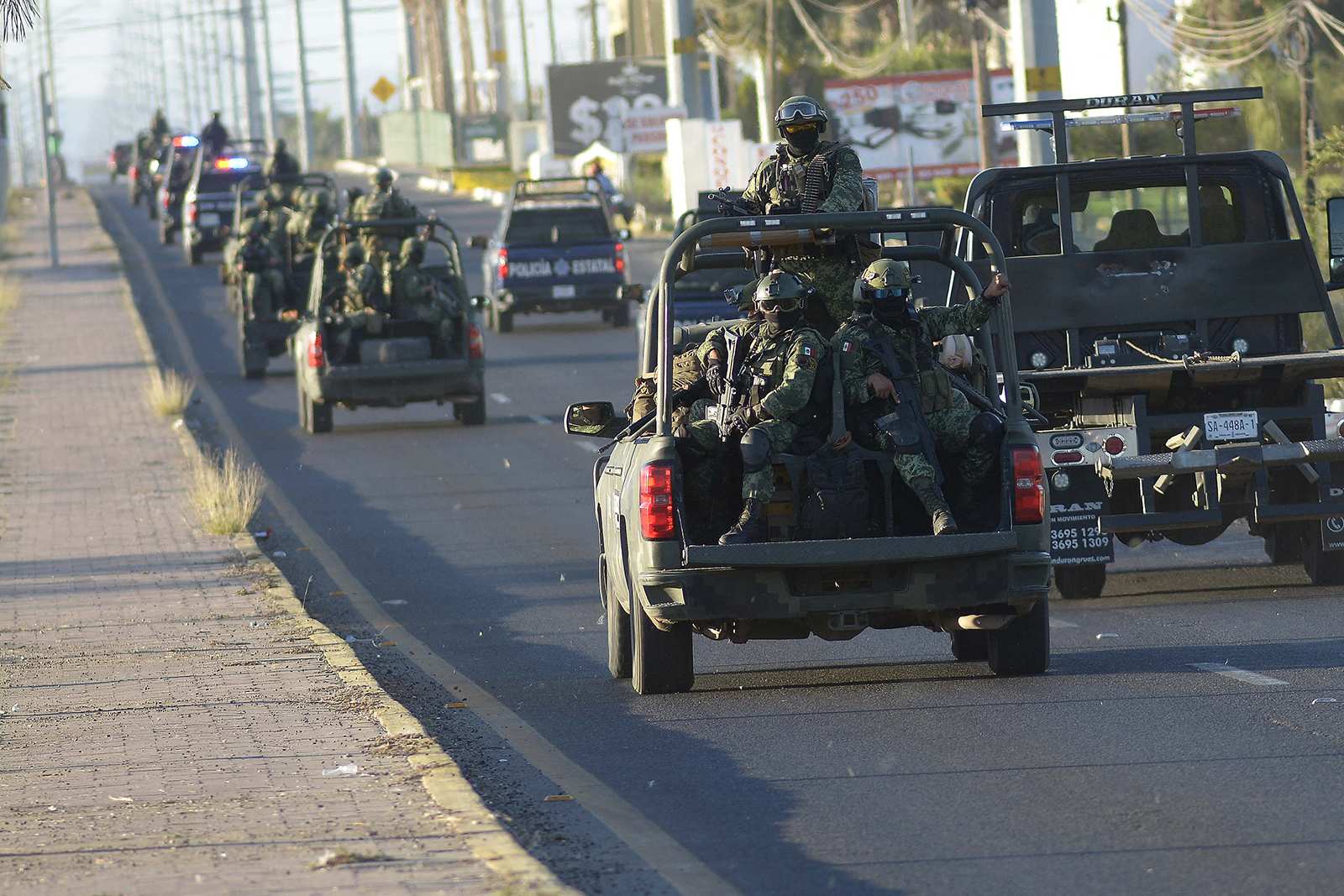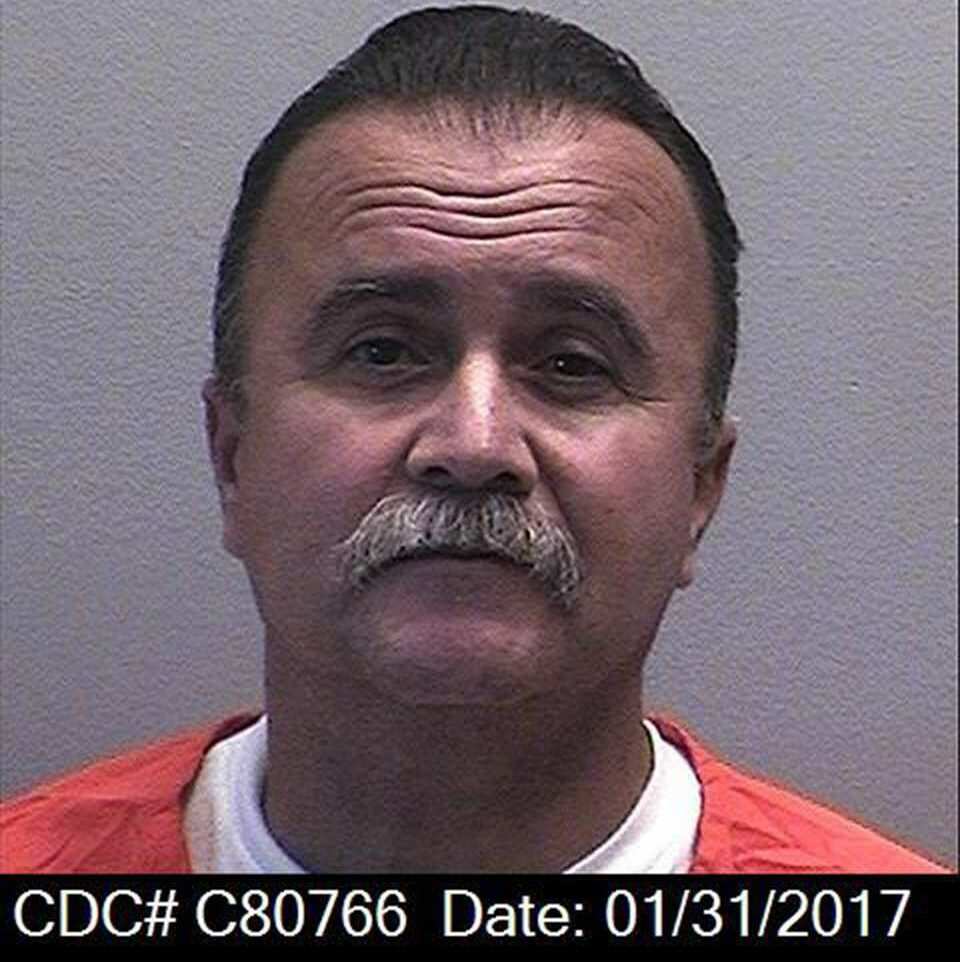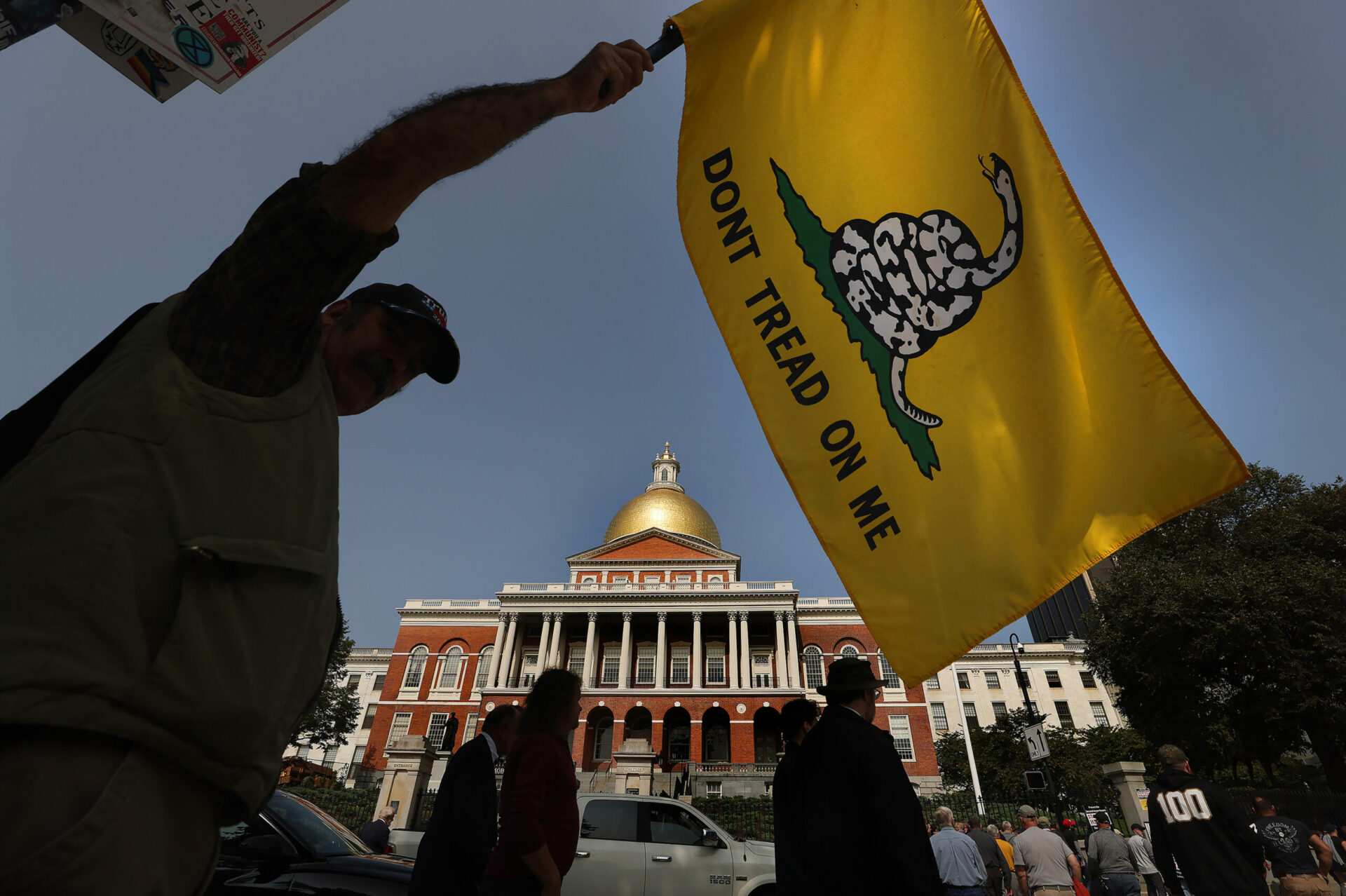Gabriel “Sleepy” Huerta has been identified by testifying witnesses and confidential informants as an influential member of the Mexican Mafia, the prison-based organization that controls Latino gangs behind bars and on the streets of Southern California. But in a case brought this month, prosecutors accused Huerta of getting involved in a mundane squabble: A lost gun that led to a beat-down on the streets of his old neighborhood.
Already serving 17 years to life for second-degree murder, Huerta, 64, is now charged with conspiring to commit assault and gang participation. He has yet to enter a plea, and court records indicate he has not retained or been appointed a lawyer.
At a federal racketeering trial last year, a witness testified that Huerta sat on the Mexican Mafia’s “commission,” a three-man governing body that settles internal disputes. Huerta claims to no longer be affiliated with the Mexican Mafia, but Los Angeles County prosecutors say he still runs rackets from state prison, where he has been held since 1984.
Los Angeles Police Department officers used informants and a wiretap to seize modest amounts of guns, narcotics and money from members of Huerta’s old gang, Eastside Wilmas, according to a 14-page summary of the probe. Police recorded Eastside Wilmas members boasting they’d “stomped” one of their own who lost a rifle in a police raid.
It seemed an unlikely case to ensnare Huerta, who Deputy Dist. Atty. Louis Avila said is considered “a great among equals” in the Mexican Mafia, which has no leader or defined hierarchy.
“It’s absolutely not something that would generally happen,” said Avila, who leads the unit that is prosecuting Huerta. “Most of the time, you wouldn’t charge these guys unless it’s a murder. Anything else, it’s, ‘He’s a lifer, he’s not getting out. Why are we going to charge him?’”
But Avila said it was important to prove in court that Huerta and other prisoners direct crime on the streets. The case against Huerta underscores the idea, he said, that no crimes should go ignored by the state, even those committed by people already serving life sentences.
Huerta grew up in Wilmington, a working-class neighborhood that hugs the docks of the Port of Los Angeles. Raised by his mother after his father left when he was 7, Huerta told the state parole board in 2017 that he looked at the local gangsters with envy: “The wealth, the cars, the girls and the popularity. I was attracted to that.”
Asked at what age he joined the gang, Huerta told a parole commissioner “There’s really no certain membership thing [with] a certain date.”
“I live there all my life and you grow up with everybody,” he said.
At 18, Huerta was was convicted of stabbing a man to death in a brawl. He was granted parole four years and nine months into a possible life sentence.
About a year after his release, a woman Huerta was pimping solicited two men, Octavio Cardozo and Guadalupe Nunez, who were working on a car on Blinn Avenue, according to a parole commissioner’s account of the crime.
Cardozo agreed to pay $15, but after having sex said he had only $11. He borrowed $4 from a neighbor, but Nunez told him not to give the money to Huerta.
“Alright,” Huerta said. “But I’m going to come back.”
He returned 30 minutes later and killed Nunez with a single shotgun blast.
Huerta told the parole board he intended only to “scare” the men, and said Cardozo fired at him first. The issue wasn’t “the $4 or whatever,” he said, but that they “made me feel disrespected.”
Huerta was sentenced to life without parole, which was reduced on appeal to 17 years to life. Even with the chance of parole, Huerta told the board in 1997: “I want you all to know that I have no illusions about ever getting out.”
As a lifer, Huerta recalled in 2017, he “lost all hope. There was nothing to lose.”
“I was searching to be vicious,” he said, “to be a bad dude.”
Huerta killed his cellmate, Nick “Nico” Velasquez at Tehachapi prison in 1988, according to prison records reviewed by The Times. Huerta was never charged with the homicide but acknowledged at a parole hearing he “caused” his cellmate’s death.
Velasquez, a Mexican Mafia member from La Puente, was targeted for death because he’d embraced Christianity and was suspected of becoming friendly with the associate warden, according to an informant’s statement to prison authorities.
Gang defectors told authorities that Huerta was inducted into the Mexican Mafia in the mid-1980s. He denied this for decades until, at a parole hearing in 2017, he acknowledged once being affiliated with the organization but claimed to have “pulled away.”
“I’m done with that,” he said. “My life is — right now I have a full cup.”
Huerta said he spends his time studying classics, mathematics, sociology and personal finance, which taught him to “save money and invest.” He told the board he encourages fellow inmates to care for their mental health, speaks out against drug use and lobbies for reading materials and access to college coursework.
A psychologist who interviewed Huerta in prison said he was pleasant and seemed to get along well with others, with the exception of “multiple episodes of extreme violence,” according to parole records.
Huerta was a key member of a group of 16 inmates that advocated against indefinite solitary confinement in California prisons. The group organized statewide hunger strikes and pressed their case to lawmakers and in the media over conditions in the maximum-security prison at Pelican Bay.
Law enforcement officials noted the committee was drawn from the state’s four major prison gangs: the Mexican Mafia, Nuestra Familia, Aryan Brotherhood and Black Guerrilla Family. But Huerta, who spent 25 years in Pelican Bay’s Security Housing Unit, told the parole board his advocacy had nothing to do with organized crime.
“I truly believed that there was constitutional violations,” he said, “and I felt something — we had to do something.”
Beginning in 2014, the state agreed to transfer Huerta and others into the prison system’s general population. Bud John Phineas, an Eastside Wilmas member called “Ghost” who served 16 years in prison for attempted murder, praised Huerta’s advocacy in an interview published by “Fresh Out,” a YouTube channel that profiles formerly incarcerated people.
Phineas said Huerta organized the hunger strikes and claimed he “has learned six languages so he can communicate with other countries to let them know what’s going on. He has degrees after degrees after degrees in college.”
Phineas was arrested this year after delivering methamphetamine to an undercover police officer in an exchange that federal agents say was facilitated by Huerta.
According to an FBI agent’s affidavit, an informant introduced the undercover officer to Huerta over WhatsApp. Using a contraband cellphone, the agent wrote, Huerta offered drugs in coded language: “What exactly does he want?? Black? White? Or what??”
When the informant said he wanted meth, Huerta replied he would “have the homie get at him.”
Ten minutes later, the undercover officer got a call from someone who identified himself as “El Borracho,” Spanish for The Drunk. Agents identified Borracho as Carlos Reyes, an Eastside Wilmas member serving 54 years to life for murdering his wife after she sought a divorce.
According to the affidavit, Reyes agreed to sell the undercover officer five pounds of meth for $6,500. Reyes said his “homie” would make the delivery at a Ralphs supermarket in Gardena, according to a police report.
The next day, Phineas dropped a shopping bag through the window of an informant’s car. Inside was slightly less than five pounds of pure meth.
Phineas pleaded guilty last month in federal court to distributing meth. He has yet to be sentenced.
Huerta and Reyes are charged in state court with facilitating the deal, said Deputy Dist. Atty. Abbigail Briones. Reyes has pleaded not guilty, while Huerta has yet to enter a plea. Both men are also accused of conspiring to assault an Eastside Wilmas member.
On Feb. 4, 2020, officers from the LAPD’s Harbor Division chased Gregorio Lopez Amaya, a 19-year-old Eastside Wilmas member nicknamed “Money,” into a home on L Street, according to a police report. Inside the house, which is less than a block away from Wilmington Park Elementary School, the officers found a handgun, ammunition and an assault rifle that prosecutors allege belonged to Reyes.
WhatsApp messages showed that Lopez Amaya was selling drugs for Reyes, according to the report. After Lopez Amaya was arrested, a fellow Eastside Wilmas member texted Reyes: “He ain’t take no losses with nothing, everything all good.”
But when Lopez Amaya was released from jail six months later, his associates grew suspicious he was cooperating with the authorities. “That’s weird,” Henry Cervantes wrote in a text message to Ulises “Lil Poste” Gutierrez, whose phone was tapped. “He had like 7 charges. We need to be careful.”
Gutierrez asked if it was “cool” to “pack him out” — slang for delivering a beating.
“Handle,” Cervantes replied. “I doubt anyone is gonna speak for him. Ima verify with the homies too.”
Officers told Lopez Amaya he was in danger and advised him to “lay low,” the report says.
In a recorded call four days later, Gutierrez bragged that he and “the homies” had “stomped” Lopez Amaya, complaining to another gang member he’d “f-ed up” his ankle when he kicked Lopez Amaya in the head, according to the report.
In other wiretapped calls, Gutierrez boasted he got permission from “the big homie” to assault Lopez Amaya. He said “the homies in there” — an apparent reference to imprisoned gang members — had told him “to pack him out and cut him off.”
Gutierrez, 30, pleaded guilty to gang participation and was sentenced in October to four years and four months in prison. Cervantes, 34, has pleaded not guilty to charges of gang participation, drug and firearms possession, and conspiracy to commit assault.
Cervantes’ lawyer, Nicholas Rosenberg, told The Times he considered the case an “exaggerated prosecution,” although he acknowledged his client was caught making statements on a wiretap. Cervantes works in the oil and gas industry and had “aged out” of gang life, his lawyer said.
Referring to Huerta, Rosenberg said: “Any time they charge someone who’s already serving life, I have to ask, What’s the purpose? It doesn’t necessarily make sense, but hey — I’m not a prosecutor.”
The wiretap on Gutierrez’s phone opened a window onto a life that seemed neither glamorous nor lucrative. Eastside Wilmas members sold strips of the addiction treatment Suboxone to opioid users in withdrawal, and bought and resold $20 quantities of heroin. Two were intercepted discussing a drug deal that netted $400 in profit. They lived with their parents into their 40s. One drove a 20-year-old Honda Accord.
As prosecutors, Avila said their responsibility is to “not just go after the low-hanging fruit.” By proving in court that Huerta and Reyes directed crimes on the street from their prison cells, Avila said he hopes prison officials will tighten conditions for lifers who have so far been breaking the law “with impunity.”
___
© 2023 Los Angeles Times
Distributed by Tribune Content Agency, LLC.

